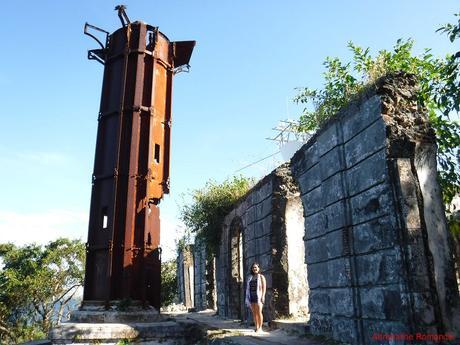
With a total land area of a little over 604 square kilometers and a population of just over 174,000 souls (NSO-2015), Guimaras Island may be a dwarf among its larger cousin Panay Island. However, within this tree-rich island province is a mishmash of natural, historical, cultural, and technological attractions that captivate the mind, body, and soul.
One thing we noticed about Guimaras is that it is gifted with an immense variety of palms, thickets, trees, and other foliage. It is actually one of the most diverse places we’ve ever visited in terms of flora.
In our backpacking trips, we always bring our Deuter ACT Trail 24. This sturdy, comfortable, and versatile backpack has been our dependable adventure buddy for years. Why don’t you get one yourself so you can go traveling and adventuring in comfort?
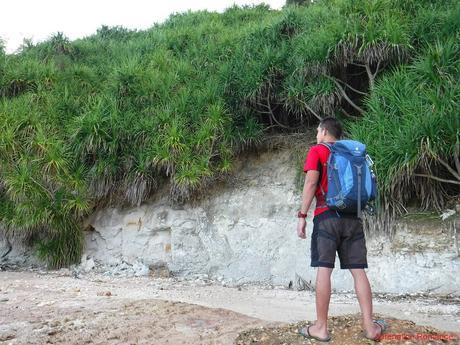
Our warm-up destination was actually just beside Nature’s Eye Resort. Quiet beaches like these are aplenty all around Guimaras Island. While some are developed by businessmen into resorts, many are still deserted or used as berthing areas for bancas of local fishermen. We stayed for a little while to observe arriving fishermen putting their early-morning catch on large styrofoam boxes.
An interesting fact about this quiet, sandy beach is that there is a foreigner family living just in front of it. Bong, our driver, said that they fell in love with Guimaras and decided to live here for good. Yes, our humble Philippines is a beautiful country.
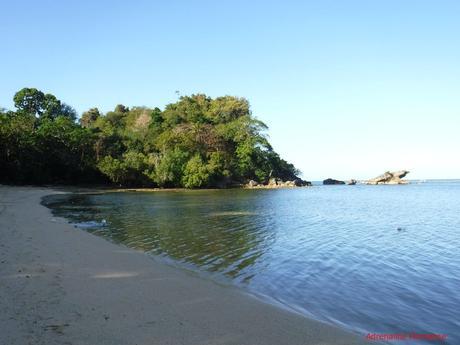
Guisi Lighthouse and Spanish Outpost Ruins
After a 15 to 20-minute ride, we arrived at our first official destination of the day. After parking our vehicle, we walked up a small dirt road that hugs the side of a rocky cliff. It offers a dazzling and uninterrupted view of the western side of Guimaras Island.
Note the sandy beach below. It belongs to a resort, but no man-made structures are built on the beach itself. That should be the case to preserve the beauty and serenity of the place.
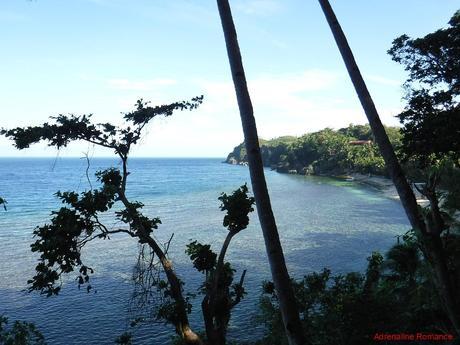
As the morning sun rose higher and the day became clearer, the charm of the seas surrounding Guimaras Island began to unfold. That’s a sparkling aquamarine and cerulean gem out there! We bet our last peso that there are healthy and vibrant reefs underneath those waves.
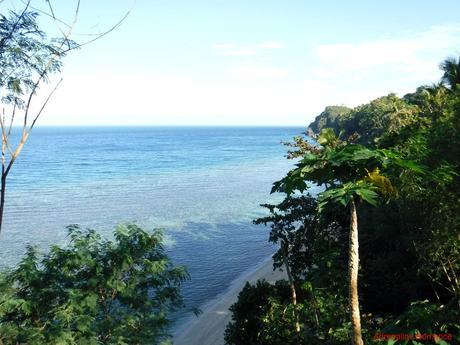
We just love dogs! This small, furry fellow readily wagged its tail when Sweetie scratched her chin. Her owner said that the furball thinks he’s a star. Hehehe!
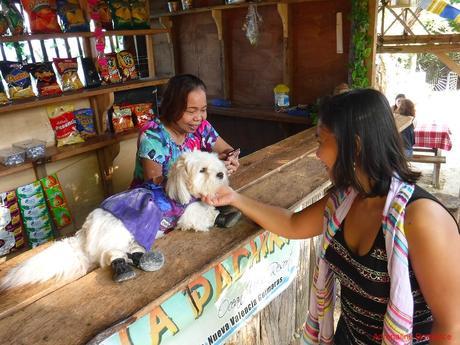
At the end of the trail is the carefully preserved ruins of a Spanish outpost. Built sometime during the 1800s, the installation once held offices and barracks of personnel who manned the nearby lighthouse.
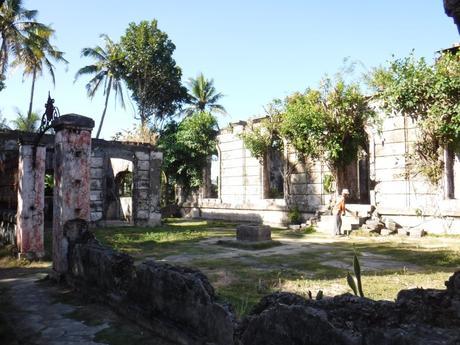
In the middle of what appears to be an old courtyard is a well. Most likely, this is where the personnel drew their drinking water while they kept a lonely watch. This may also be the water source of the nearby community.
There was still a lot of water in the well, which meant that it was still functional. With the advent of modern plumbing, however, people have abandoned drawing water here and began to rely on pipes and pumps. Today, it is now a wishing well, and we could see plenty of coins at the bottom.
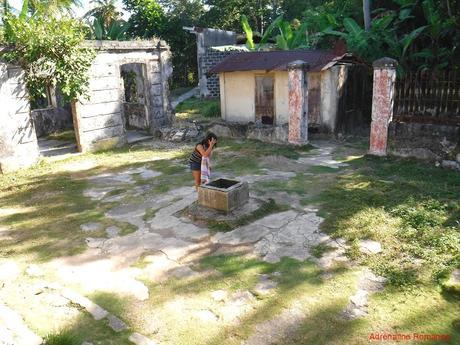
We were quite impressed at how the LGU managed to preserve the ruins. In many of the ruins we’ve visited, the structures are reconstructed, repainted, planted with gardens, and more; all these “beautifying and modernizing” activities strip away the nostalgia of the place. But installation’s old pillars, walls, window frames, rooms, and passageways are left as they are. Except perhaps for regular cleaning of the grounds and trimming of overgrown plants, there appears to be no attempt to improve the ruins to make it more touristy.
Again, that’s a huge plus in our book!

In the silence of the warm morning, we could feel the quiet spirits of those who once stood watch here, ensuring ships sail in safety through Guimaras Strait and watching for raiders who might pillage the nearby towns. These ancient hallways, with resilient arches made of coral stone blocks, must have seen busy days as engineers, navigators, soldiers, and officers bustled about in their work.
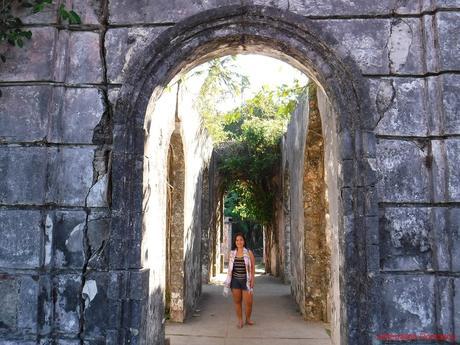
At the very tip and highest point of the peninsula is the Guisi Lighthouse, known as the Faro de Punta Luzaran in the old times. The lighthouse is, of course, non-functional, but the people of Guimaras are immensely proud of it. Who wouldn’t be considering that this is the second oldest lighthouse in the Philippines?
The Guisi lighthouse was built sometime in the 1890s and was lighted for the first time in 1894. Pre-fabricated metal from France, concrete from England, and lenses from France are used in the construction of the lighthouse.
We wanted to climb to the top, but the spiral stairs look rusty and fragile. For safety reasons, we did not pursue the thought.
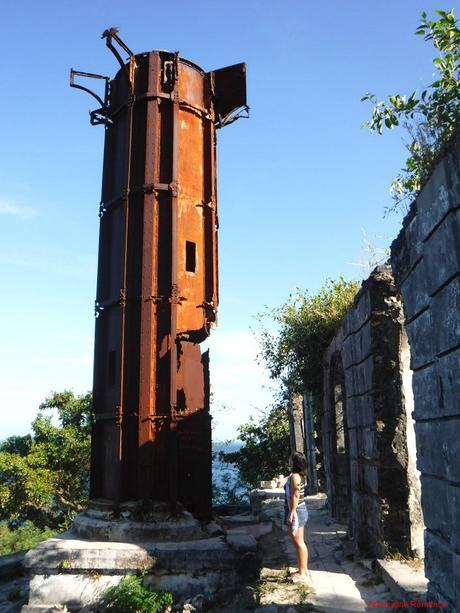
This geographical location offers the best vantage of the sea. Thus, a more modern solar-powered lighthouse was installed to take over its ancestor’s place.
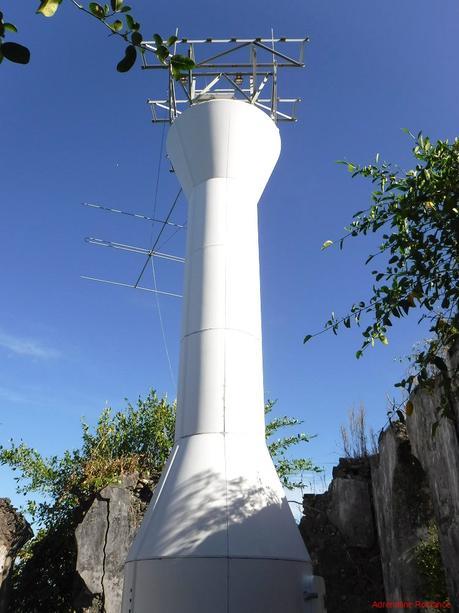
Alubihod Beach Resort
After exploring the ruins, we headed to another destination, the popular Alubihod Beach Resort. In many ways, the place reminded us of our very own Basdaku in Moalboal where resorts, both affordable and expensive, line up the place.
The beach didn’t really pull our heartstrings; it was just a short stretch of sand shared between three or four resorts. In fact, when we went there, the shore was already brimming with crowds of people, and more were even coming.
However, we understood why it is a hit among locals and tourists alike. The sand is fine, the sea is azure, and the view is beautiful. Furthermore, an affordable entrance fee of P 25 per person, free corkage, easy access, and plenty of cottages meant that Alubihod Beach Resort will always be a favorite hangout for families and friends.
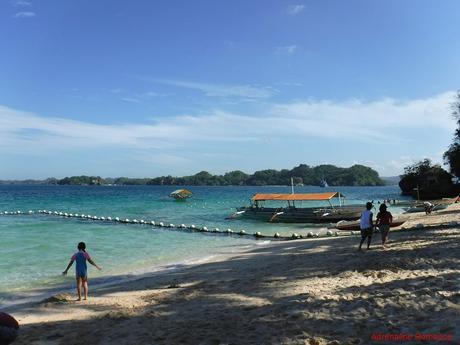
Guimaras Mangoes
Guimaras has a prestigious name—Mango County. Even its tourism slogan—The Island that Fits Your Taste—refers to its mangoes, which are reputed to be among the sweetest, juiciest, and most luscious in the world. We have tasted Guimaras mangoes, and we swear, they melt in your mouth!
The residents of Guimaras hold the fruit with such reverence that they even celebrate a festival for it. Called Manggahan Festival sa Guimaras and first celebrated in 1993, the festival depicts the cultural heritage of the island, the deep connection of the produce with its people, and the promotion of sweet Guimaras mangoes to tourists and locals alike.
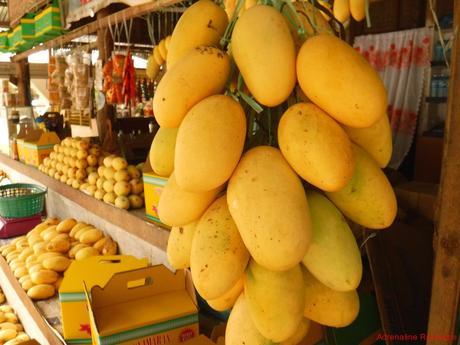
The mango is the most numerous agricultural product in Guimaras. Almost every establishment here sells the island’s home-grown mangoes, from expensive restaurants to roadside stalls. Also, these fruits are exported to all corners of the globe.
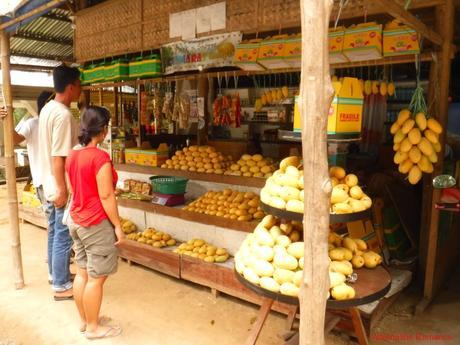
Aside from fresh fruits, Guimaras also processes, sells, and exports delicious mango products such as piyayas, barquillos, tarts, jellies, and more. Would you believe that there’s even a mango ketchup? Oh yes, we kid you not! Mango ketchup is produced by McNester Food Products.
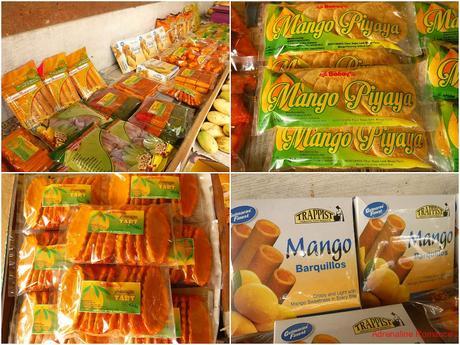
Where do these massive hoards of mangoes come from? Well, we didn’t have to look far. On both sides of the Guimaras Circumferential Road, we could see acres upon acres of mango plantations. The groves are so vast that they stretch beyond our vision. In fact, it seemed that the entire island of Guimaras is covered with mango trees!
Check out the photo below. Those domed shapes in the background are huge mango trees! And those are, we reckon, about a mile away! The nearby trees are also grafted mango trees.
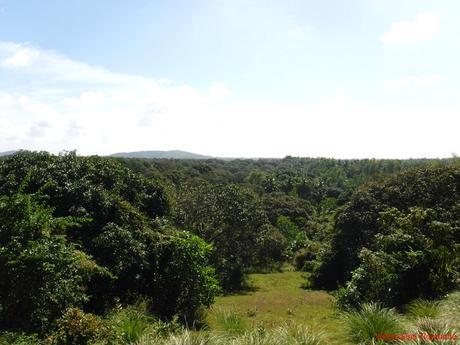
Some plantations share the land rice farms. This is a mutually beneficial arrangement. The rice husks provide nutrients for the mango trees while the trees shield the rice plants from strong winds that occasionally sweep across the island.
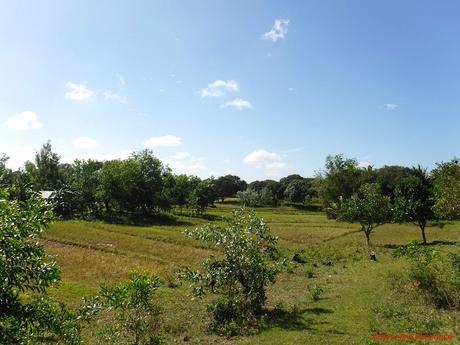
Despite huge tracts of land being developed into mango plantations and farms, Guimaras still retains a lot of its original forest cover. In fact, from the highway, we can see a large stretch of original rainforest stretching all the way to Santa Ana Bay where luxury yachts are sometimes moored.
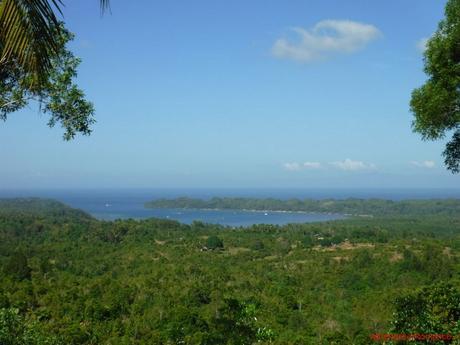
Trappist Abbey
Our next stop is the Our Lady of the Philippines Trappist Monastery, the only Trappist monastery in the country. The sacred enclave was built and founded in 1972. At present, it is managed by monks of the Cistercian Order of the Strict Observance.
The centerpiece of the enclave is this modern Abbey Church. We found the interior architecture quite unusual because the bema (a raised portion where the monk/priest celebrates mass) is located at the center of the church. In most churches, the bema is located in front.
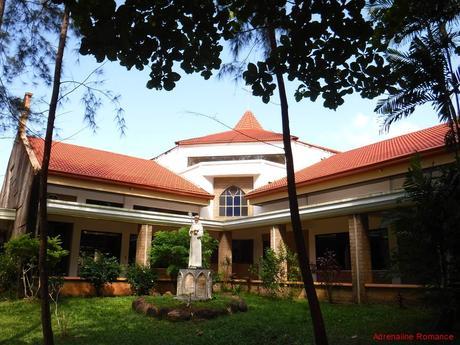
This is Brother Peter, the Cistercian monk who receives guests. Obviously, he loves pets as he is always surrounded by these fluffy dogs when he goes around. However, forget about that stereotype notion that monks are archaic people who still live in a bygone era. Brother Peter is, in fact, very much in touch with the modern era. When we shot this photo, we thought he was praying; he was actually reading something from his smartphone!
The monks residing in the monastery strictly adhere to the rule of St. Benedict. They are austere and strict, which speaks volumes about their discipline.
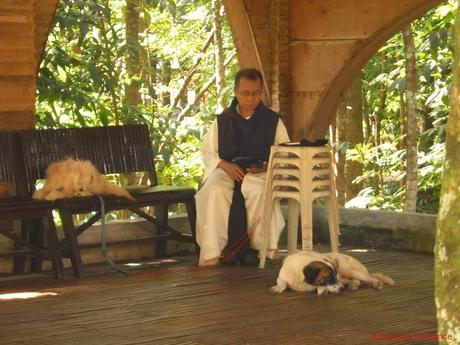
If you want to regain your connection with your spirituality, re-examine your life, or need some serenity from personal troubles, then the Trappist Monastery is the best place to go. You can re-attune your soul energy by simply walking under the shady trees, listening to the birds chirping merrily high above you.
There is something spiritual about this place. The immersive silence fills your heart with calmness and peace.
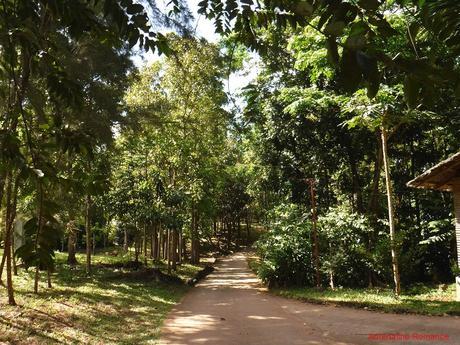
The monks manufacture products that they sell under the brand Trappist Monastic Products. These include jams, marmalades, liqueurs, concentrates, juices, and more. Mango products, souvenirs, religious trinkets, shirts, and native wines are also sold here. The Trappist Abbey gift shop is a popular tourist stop.

Holy Family Hills
Guimaras is perfect for those seeking solitude, meditation, and spiritual renewal. They have several ideal places for soul searching, and one of these is the Holy Family Hills, an expansive pilgrimage site that is managed by the Eucharistic Disciples of St. Pius X. It is known for the many life-sized religious statues around the estate.

Here are more life-sized statues that depict the 14 Stations of the Cross. This place would probably be filled to the brim during Holy Week.
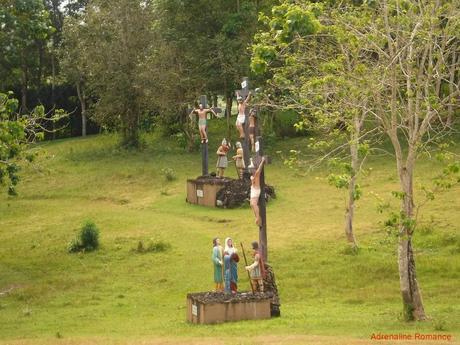
The centerpiece of the property is a garden pathway that leads to a giant shrine of the Holy Family. Morning glories, ferns, palm trees, and other types of plants are carefully manicured and maintained.
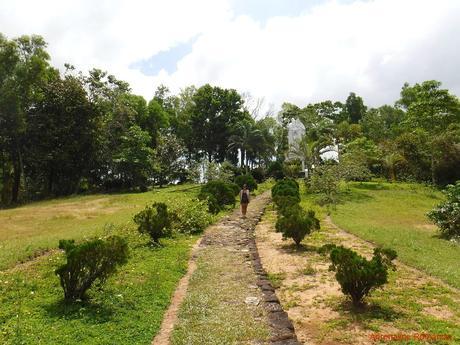
The ferns are some of the most unusual we have seen; they have thick, flat leaves. They also give off a mild scent reminiscent of pine. No wonder it smells so fresh and fragrant here.
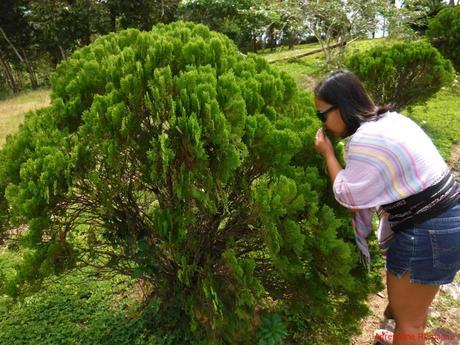
The Holy Hills Family is a 52-hectare enclave that was established in 2000. Originally, it was reserved for priests who wish to go on a pilgrimage. Later, they decided to open the place to the public.
No fixed entrance fees are collected; rather, guests simply donate any amount they want. The money is used for the upkeep of the premises.
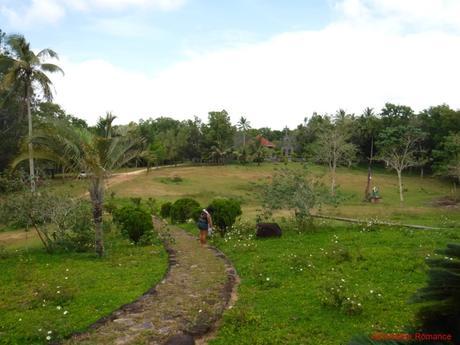
There’s also a chapel, prayer room, and minor shrine in the enclave. Everything in Holy Family Hills clearly demonstrates the Filipino’s strong Christian roots and beliefs, thanks to our Spanish conquerors who introduced Christianity to Filipino natives in the early 1500s. Although we are agnostics, we can’t help but feel that there’s something…holy about this place.
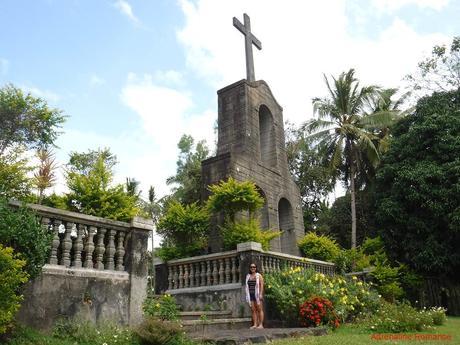
San Lorenzo Wind Farm
Our next stop was a totally unexpected one. You see, among of the most scenic backpacking destinations we’ve ever visited are the wind farms of Ilocos Norte. Seeing how beautifully those towering windmills blend together with the pristine landscape made us realize that there is truly hope for establishing and promoting renewable energy in the country.
So it was truly a happy surprise for us to know, see, and actually visit another expansive wind farm right here in the Visayas. With turbines scattered over five barangays, the San Lorenzo Wind Farm is the first of its kind in the Visayas. Like its counterpart in Northern Luzon, it aims to supply the region with clean, renewable energy while serving as a tourist destination at the same time.
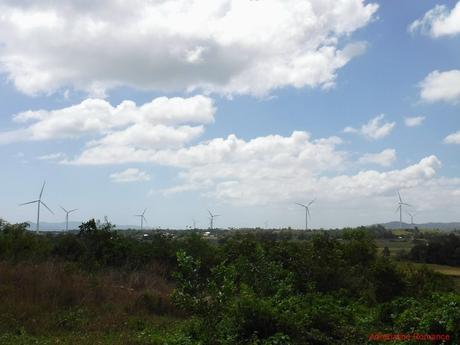
It was our first time to be face to face with one of these towering windmills. Each Gamesa windmill stands at 123 meters tall, and each turbine generates 2 megawatts of power. To reach the rotor itself, personnel would have to ride a small elevator inside the trunk.
Check out the photo below for size reference.
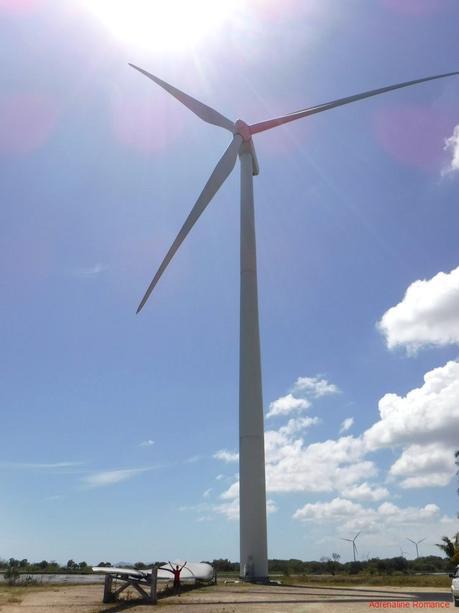
We will never be able to go up a windmill to see those blades in action; going up the trunk is for authorized personnel only. Fortunately, a spare (or damaged) blade is placed here as an “attraction.” And yes, at 90 meters per blade, it’s absolutely monstrous!
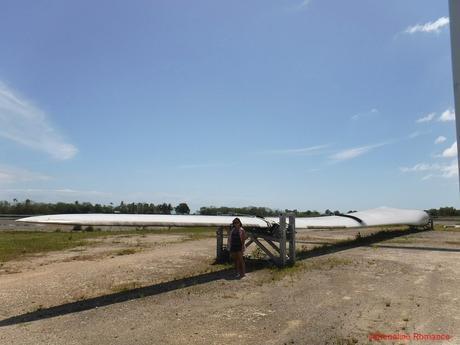
The windmills are subjected to enormous stresses, thus, they have to be sturdily built and braced well. The poured concrete for each windmill’s foundation is enough to build two medium-sized houses! Dozens upon dozens of thick bolts—the black contraptions surrounding the trunk—secure the tower to the foundation; the engineers are definitely not taking chances!
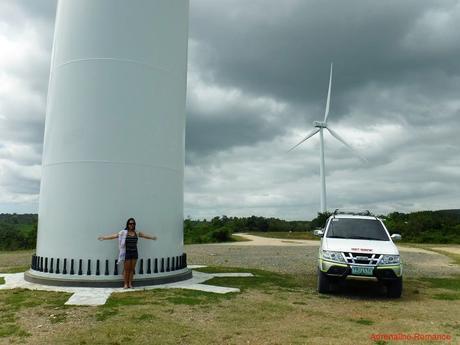
The San Lorenzo Wind Farm has 27 wind turbines, generating a total output of 54 megawatts. This power is distributed to various power utilities in Cebu, Negros, and areas in Western Visayas via the National Grid Corporation of the Philippines.
Bong said that the Trans-Asia Renewable Energy Corporation, the operator of the wind farm, plans to increase the number of windmills to 54 in the coming few years. Yes, we are seeing a bright, clean future ahead.
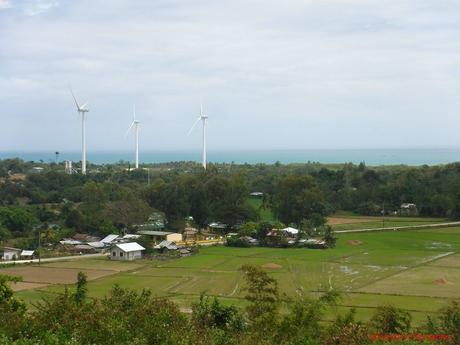
Smallest Plaza
We silently gorged on a meaty lunch in San Miguel. On the way back to Jordan pier, we stopped by what was ostensibly the smallest plaza in the world. It is definitely—cute, occupying a fraction of a triangle-shaped street island.
A statue of Dr. Jose Rizal, the Philippine National Hero, stands on a raised pedestal. Surrounding the pedestal is a garden of carefully trimmed santan flowers.
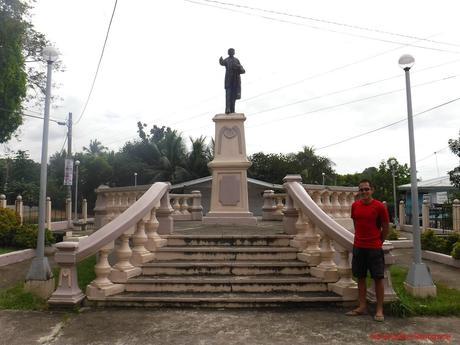
At 3 PM, we reached Jordan Wharf and said goodbye to Bong. Stepping on the boat that will take us back to Iloilo invoked a strange feeling of emptiness and longing. It was that familiar feeling of missing a wonderful place.
Farewell for now, lovely Guimaras. For sure, we will come back to lay eyes on your many other secrets and wonders.
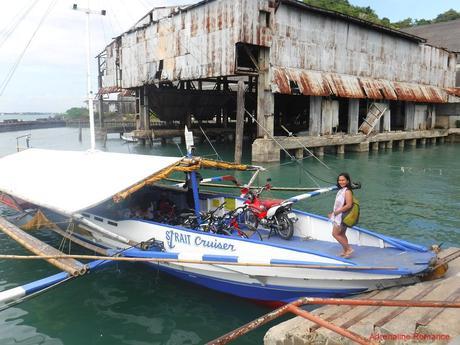
Guimaras Strait Sunset
We still had two hours left before boarding our ship. We passed the time by going to a nearby mall in downtown Iloilo to enjoy some hot coffee and check out a few emails.
We boarded our ship just in time to witness the legendary fiery sunset of Guimaras Strait. Everyone who saw it said that it is one of the most spectacular sunsets in the Philippines, and they were absolutely right. The soft yet glorious light that shines from that sinking, blazing disc truly instills in us a massive dose of pride and love of our country.
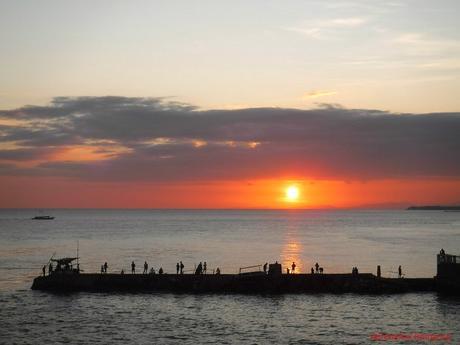
Wait! You thought it was over? Oh no! The official end to our Guimaras trip was actually in the ship. We dined on one of the most unusual dishes we’ve ever eaten—mango pizza! Yes, you heard that right. That’s pizza pastry with sweet Guimaras mangoes, crunchy green peppers, and thick melted cheese as toppings.
The taste is not bad; it’s delectable in its own way actually. But it just felt absolutely weird. The combination is just so wrong….

After a windy overnight trip, we woke up to a very scenic morning. We smiled upon seeing our very own home island bathed by the rays of the morning sun. It’s good to see you again, Cebu.
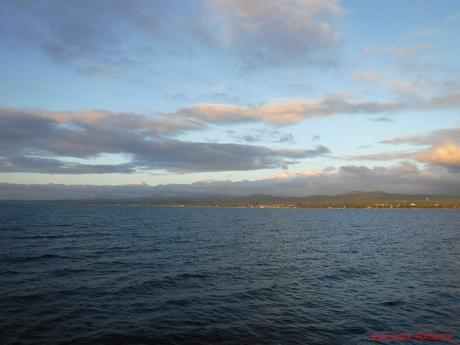
Special Thanks
We would like to thank our driver and guide Bong for taking us all around Guimaras. He is one great guy and an excellent companion.

Thank you very much, Ma’am Rowena of Nature’s Eye Resort for hosting our Valentines adventure. You are one amazing host, and we enjoyed every second of our stay in your resort. We were thrilled every moment in our island hopping tour and Guimaras inland tour that you kindly organized for us.
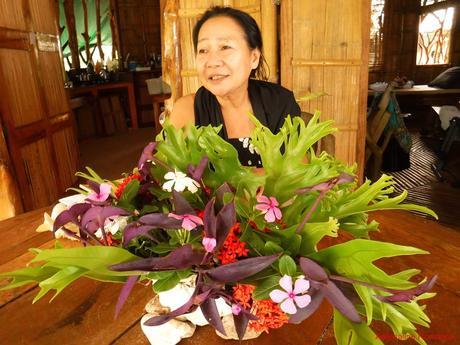
If you are seeking utmost tranquility, then beautiful Guimaras Island is the right place for you. Its cool rural setting, magnificent attractions, and unblemished simplicity of life altogether call out to everyone who wants to experience a little peace, quiet, and childlike wonder.
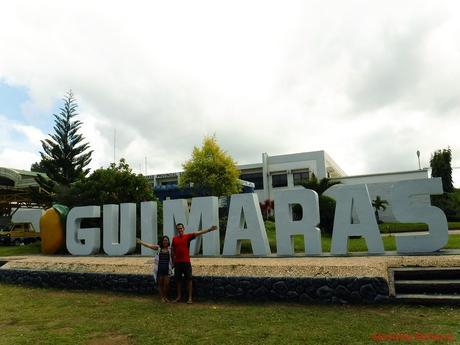
Contact Details
For guideship and transportation services, get in touch with Benjie “Bong” Gajo of Trinity Transport using the following numbers:
- 0929-966-4631
- 0927-774-4935
If you opt to go DIY; need more information; require assistance in booking, transport tariffs, and tours; etc., get in touch with the Provincial Tourism Office using the following contact details:
- Street Address: GTIC Building, Provincial Capitol
- Landline: (033) 581-2021
- Website: Province of Guimaras Website
- Email: [email protected]
They have a satellite desk right at the Jordan Pier. You can look for Guimaras Tourism Officer Ruby at 0920-811-7101 for assistance.
Rates*
Day Tour
- 1,500 – tricycle (good for single travelers and couples)
- 2,000 – multi-cab (good for large groups)
- 2,500 – SUV (good for couples, small groups, and families)
Other Rates
- P20 – Guisi Lighthouse Entrance Fee
- P25 – Alubihod Beach Resort Entrance Fee
- Donation – Trappist Monastery and Holy Family Hills
* Rates are subject to change without prior notice. We did not include our expenses for meals, snacks, souvenirs, accommodations, tips, and other fees in this rate sheet as you may have different needs, preferences, itineraries, and sharing scheme from us.
Getting There
Take a passenger boat (P 14 per pax) from Ortiz Wharf in Iloilo City to Jordan Wharf in Guimaras. At the Jordan Wharf, proceed to the Tourism Desk at the port.
Tips
Since the attractions in Guimaras are located far from each other, it is better, more convenient, and time-saving to hire a vehicle than to commute from one attraction to another. We strongly recommend you hire a multicab or SUV rather than a tricycle for comfort and speed.
Save
Save

